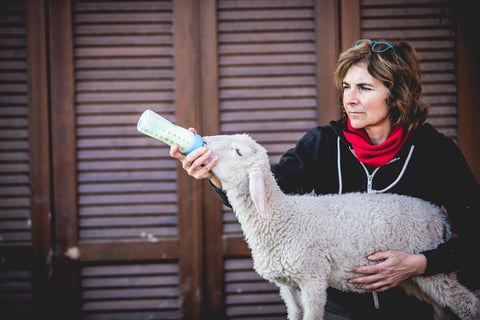 Photo: @cottonbro
Photo: @cottonbro
A familiar scent brings back warm memories. The right scent can remind you of a rainy day, the beach, freshly cut grass on a summer’s day, or even the embrace of a loved one.
Perfumes transport us. But what if they are also vegan and animal-friendly? That's a win-win. We’re talking about perfumes that don’t contain any animal-derived ingredients, and are cruelty-free.
Several brands are starting to cater to a larger conscious customer base and the perfume industry is slowly becoming eco-conscious and animal-friendly.
But what makes perfumes non-vegan? Here is a checklist if you’re looking to make a purchase.
1. Some perfumes contain animal ingredients
Some fragrance ingredients may be of animal origin, so always consult sales representatives and check the ingredients. The list of animal-based products is extensive but common and seemingly innocent ingredients include the likes of honey and beeswax (from bees), ambergris (a substance that forms in the digestive tract of sperm whales), milk (from cows, buffalos), and lanolin (derived from sheep wool).
In recent years, synthetic and hence, vegan versions of these ingredients are becoming increasingly common. Check out this article for 14 non-vegan ingredients in your cosmetics.
2. Some perfumes are tested on animals
Many companies conduct animal testing to determine if a product could irritate human skin. Scientists perform a ‘Draize’, which is an eye/skin test, on the skin of rabbits, mice and rodents to deduce any potential harm to humans.
While personal care products sold in North America, Europe, and Australia are usually transparently labelled to indicate if they were tested on animals, it isn’t the case in China. The China Food & Drug Administration (CFDA) requires all cosmetics and perfumes to be animal tested, even if it is carried out abroad.
3. Natural vs synthetic perfumes
 Photo: RF Studio
Photo: RF Studio
Scents with ingredients harvested from natural sources are often mistaken to be eco-friendly and therapeutic when, in fact, they can be a huge threat to the environment. The process of cultivating or procuring these ingredients can contribute to deforestation.
For instance, around 10,000 pounds of rose blooms are required to create one pound of rose oil – a ratio that’s similar for most natural fragrance ingredients.The amount of space and resources needed to support the industry is hence immense.
To get around this, perfume brands use synthetic ingredients to replicate natural fragrances as they are easier to produce consistently. The synthetic scents that don’t use any animal-based ingredients nor tested on animals can be considered eco and vegan-friendly.
The best part? A perfume made from only natural ingredients lasts between one to two years while a synthetic perfume can last up to five years.
4. How to identify vegan and cruelty-free perfumes
 Graphic Credits- Ethical Pixies
Graphic Credits- Ethical Pixies






